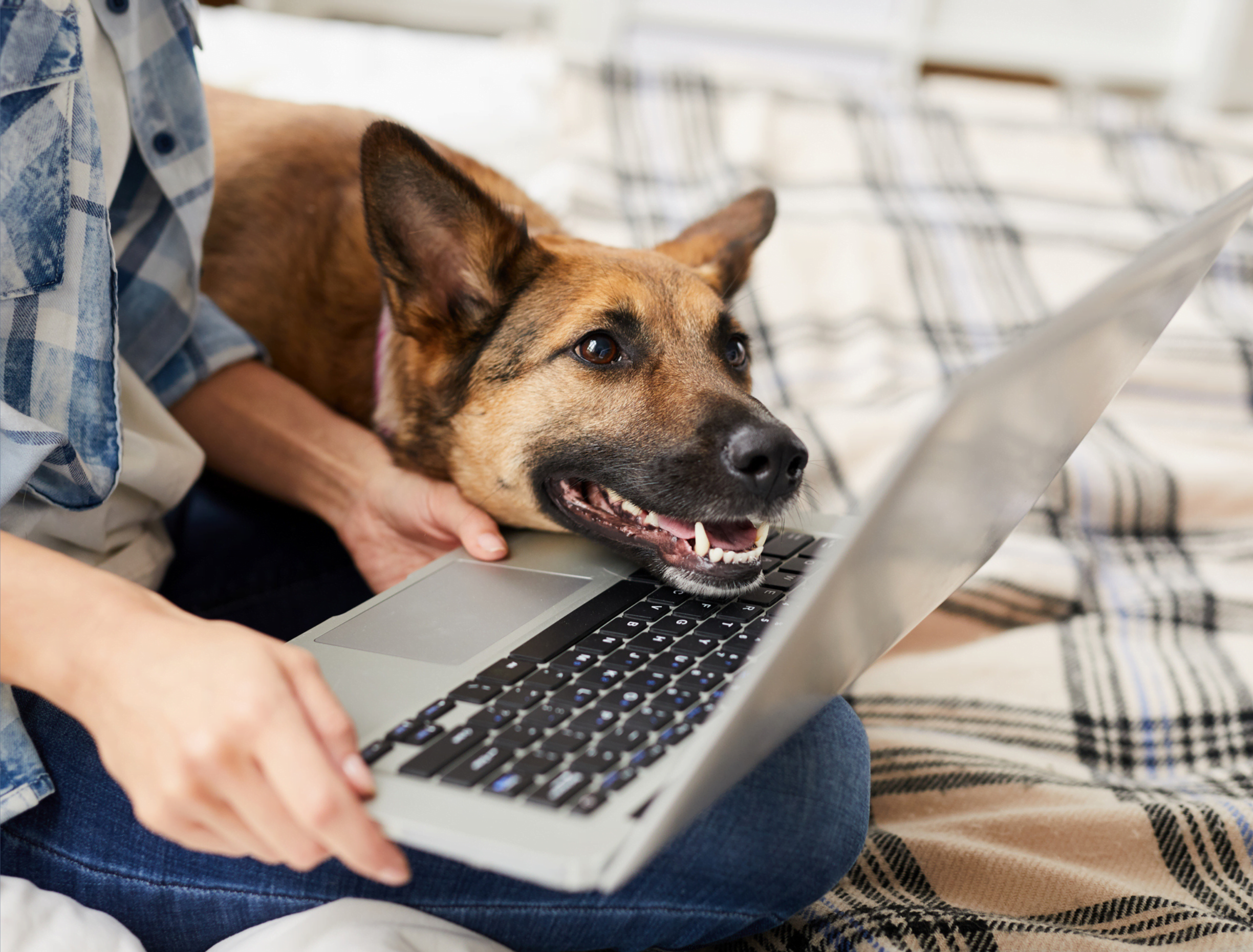For happy family life, it’s important that dogs learn to relax and have time on their own. It’s especially important for them to do this when you’re busy at home – with guests, making dinner or cleaning, or outside with friends at the pub or café.
It’s hard for your dog to learn how to settle when there are distractions, so it’s best to begin practicing somewhere quiet.
To begin with, you may just need to reward your dog for any behavior that doesn’t involve staring at you, pulling on the lead, or barking.
Sit quietly on a chair with your dog on the lead and a blanket on the floor. Drop tiny bite-size treats to your dog as a reward for settling down on the blanket. Don’t say anything to your dog while doing this.
Gradually reward more relaxed behaviors. This will vary between dogs – some will automatically start lying down so you can quickly progress to rewarding your dog only for this behavior.
Then move on to reward specific signs of relaxation like sighing, weight shifting, and head resting.
Some dogs will take longer and might struggle to stop pulling on the lead or staring at you. If this is the case with your dog, you’ll need to take things more slowly by rewarding behaviors such as standing quietly, disengaging from people, or sniffing their blanket.
Always make sure your dog is having a good time when settling, whether enjoying their toys, chews, or simply dozing and snoozing!

When your dog is relaxed, start increasing the time they must be settled before you reward them. Gradually build up by a couple of seconds each time over multiple training sessions.
Once your dog starts to get the hang of it and is shifting their weight so they’re comfortable and relaxed, you can start practicing with them off-lead. You need your dog to learn that they can settle whether they’re on or off-lead – useful skills for a lot of different situations!

Slowly start building up distractions by practicing the ‘settle’ in increasingly busy areas, or ask a helper to create a distraction by walking past, progressing to more exciting activities like sweeping or skipping.
If your dog becomes unsettled or gets up, ignore them and wait until they settle again before rewarding them. If they won’t relax and settle, increase the distance from the distraction or make the distraction less interesting.
Once your dog has learned the basic objective of being settled, try training in different locations with more distractions.
Try to resist telling your dog what to do during training, the aim is for them to learn for themselves to be calm and relaxed. This is a form of learning that requires your dog to learn to settle without needing to be asked.

Если вы нашли эту страницу полезной, пожалуйста, подумайте оставив небольшое пожертвование Чтобы помочь нам создать более полезные советы.
Вы также можете Подпишитесь на нашу бесплатную рассылку Для получения дополнительных советов и приемов, и для того, чтобы быть в курсе нашей работы.
| печенье | Продолжительность | Описание |
|---|---|---|
| cookielawinfo-checkbox-analytics | 11 месяцев | This cookie is set by GDPR Cookie Consent plugin. The cookie is used to store the user consent for the cookies in the category "Analytics". |
| cookielawinfo-флажок-функционал | 11 месяцев | The cookie is set by GDPR cookie consent to record the user consent for the cookies in the category "Functional". |
| cookielawinfo-checkbox-necessary | 11 месяцев | This cookie is set by GDPR Cookie Consent plugin. The cookies is used to store the user consent for the cookies in the category "Necessary". |
| cookielawinfo-checkbox-others | 11 месяцев | This cookie is set by GDPR Cookie Consent plugin. The cookie is used to store the user consent for the cookies in the category "Other. |
| cookielawinfo-флажок-производительность | 11 месяцев | This cookie is set by GDPR Cookie Consent plugin. The cookie is used to store the user consent for the cookies in the category "Performance". |
| просмотрено_cookie_policy | 11 месяцев | Файл cookie устанавливается плагином GDPR Cookie Consent и используется для определения того, дал ли пользователь согласие на использование файлов cookie. Он не хранит никаких личных данных. |
Создайте учетную запись или войдите в систему, чтобы сохранить любимых домашних животных.
У вас нет учетной записи? Связаться с нами
Прежде чем приступить к подаче заявления на усыновление, ознакомьтесь и примите наши правила обработки данных:
Примечание: By clicking "I Agree & Continue", you will be redirected to an external application form. This tracking system logs your interest but does not capture data from the external form.